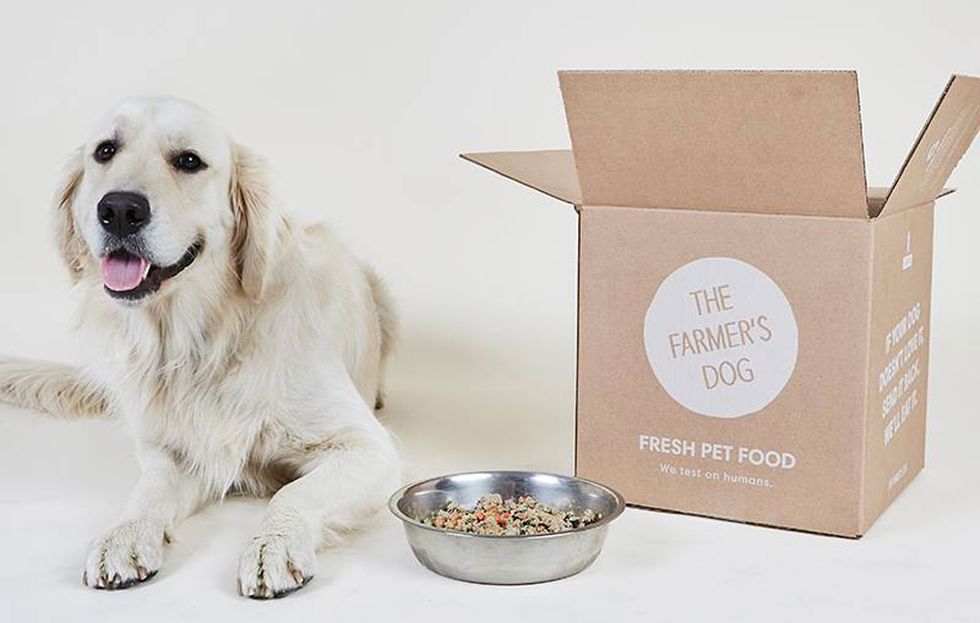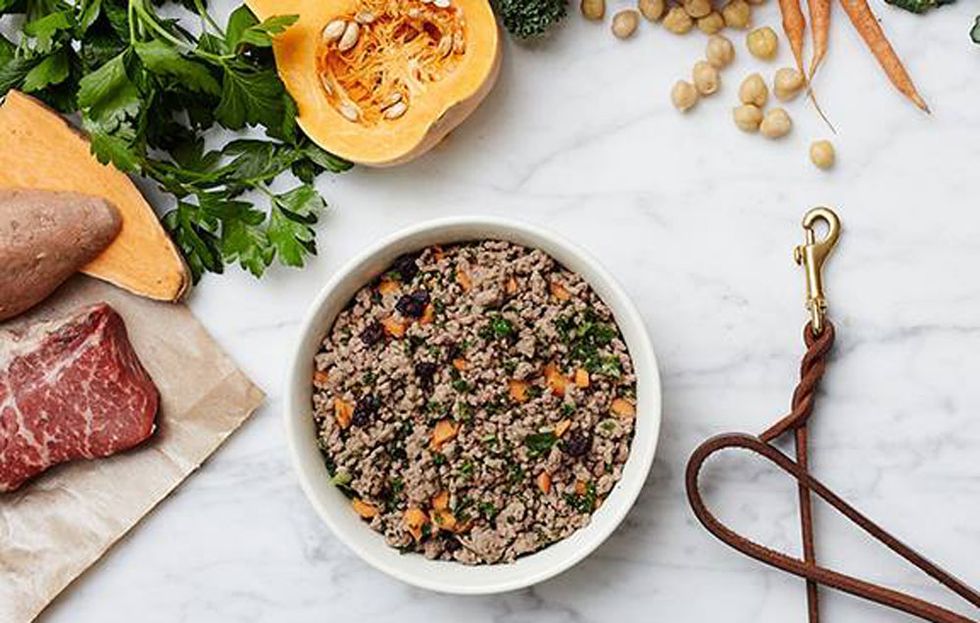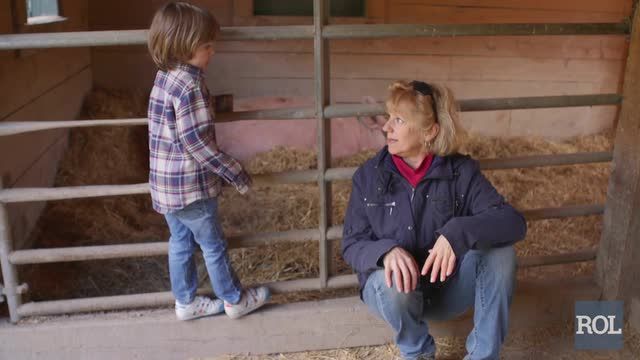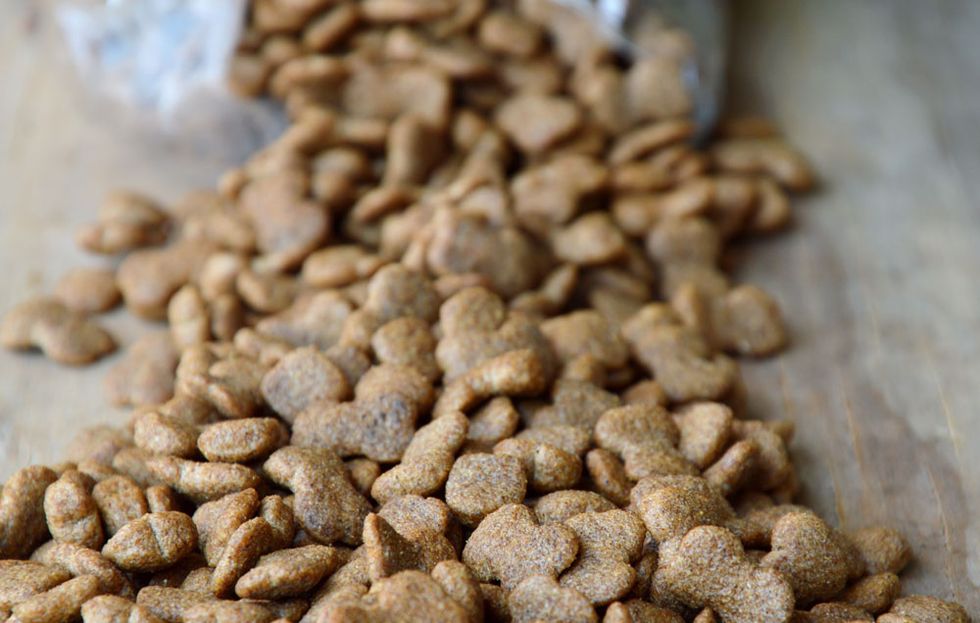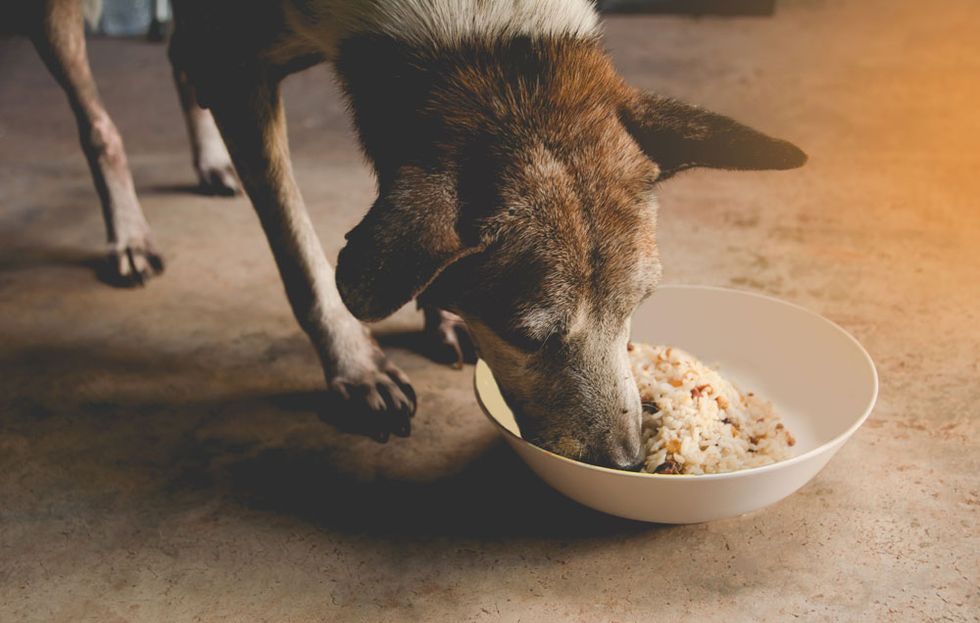This story originally appeared on Rodale’s Organic Life in October 2017.
It’s tough enough figuring out what you should eat, let alone your dog. Walk into any pet store, and dozens of foods assault you, all screaming for your attention through adorable graphics and easy-to-believe claims. Yet don’t be so easily fooled.
Finding the right food for your dog takes serious sleuthing—I continue honing my nine-year-old golden retriever’s diet, which now consists of Farmer’s Dog and The Honest Kitchen—but it’s worth the effort. “You are what you eat, and so is your pet, and the more attention you pay to what you put in your pet’s bowl, the rewards you’ll reap will be huge,” says Carol Osborne, D.V.M., integrative veterinarian and founder and director of Chagrin Falls Veterinary Center & Pet Clinic in Chagrin Falls, Ohio “The majority of degenerative disorders like kidney, liver and heart diseases, and cancer can be reversed and prevented by feeding good natural, wholesome nutrition.”
Plus, by doing your homework, you can hopefully avoid having your dog be the victim of a recall like the one in 2007. The culprit was melamine, an industrial chemical, that was found in pet food, killing hundreds.
Before you set off looking for the perfect food for your dog, however, chew on this: “There’s not any one perfect food,” says Susan G. Wynn, D.V.M., D.A.C.V.N., board-certified veterinary nutritionist and integrative practitioner with BluePearl Veterinary Specialists in Atlanta. Plus, what works for one dog may not work as well for another.
With that in mind, these holistic veterinarians offer seven strategies to help you sort through the confusion:
(Like what you're reading? Sign up for our newsletter to get health insights, clever kitchen tricks, gardening secrets, and more—delivered straight to your inbox. And follow along on Facebook and Instagram.)
1. Consider cost
As clichéd as this sounds, you get what you pay for. “No matter whether you’re a person or pet, it costs money to eat good, healthy food,” Osborne says. Opting for the cheapest food means you’ll be giving your dog highly processed food that could lead to health problems.
2. Choose minimally-processed foods
Dry kibble is a processed food that’s been created with high heat. The problem? “High heat causes carcinogens, which means your dog will be ingesting some carcinogens in every bite,” says Barbara Royal, D.V.M., integrative veterinarian who specializes in pet nutrition at the Royal Treatment Veterinary Center in Chicago.
Fresh foods with some moisture are best—these are different from canned wet food and include numerous brands such as NomNomNow, the Farmer’s Dog, and Ollie, which deliver food straight to your door; or even dehydrated food that you rehydrate at home, like that from Honest Kitchen.
Related: 4 Holistic Vets Reveal Exactly What They Feed Their Dogs
Whichever you choose, make sure about 40 percent of the calories come from protein, 40 percent from fat, and 20 percent from carbohydrates. And even if you do have to choose a dry kibble, you can still follow the tips below to find a good one. (You can even make your own pet food—but experts advise only trying this if you have the time and money to commit to preparing nutritionally balanced meals for your dog every single day.)
3. Key in on the first ingredient
While the ingredient list on a whole isn’t particularly useful, the first ingredient is. It essentially tells you what item that food contains the most of, and it should be the main protein source such as chicken, beef, or fish, Osborne says. Animal “meal”, which is rendered product from animal tissue, should never be the first item, if in the food at all. “These products put a burden on your dog’s system, especially its kidneys,” she says.
Avoiding meal won’t be a problem if you opt for one of the fresh food brands mentioned above, but even some higher quality dried kibbles are eliminating animal meal from their recipes altogether, such as those from Halo, which also happens to be non-GMO.
(Watch this cute kiddo explain his decision to become a vegetarian.)
4. Be suspicious of ingredients you can’t pronounce
“If you can’t pronounce something in the food, walk,” Osborne says. Depending on your views, that may include synthetic preservatives such as tertiary butylhydroquinone (TBHQ) or butylated hydroxytoluene (BHT), which pet food companies add so the food doesn’t spoil. One easy way around that? Buy the smallest bag so you go through it faster, Wynn says.
5. Don’t fall for label claims like 'grain-free'
Packages are often loaded with seemingly impressive claims, but most hold little meaning. “Words like ‘natural’ are little more than marketing hype,” Osborne says. And that grain-free label? Again, meaningless. “It’s useful as a marketing term only, as many people mistakenly believe dogs shouldn’t eat carbohydrates (grains are a source of digestible carbohydrates),” Wynn says. “Whether carbohydrates are bad for dogs is another issue completely and not related to grain in the diet.”
Related: 3 Supplements Holistic Vets Give Their Pets Every Single Day
Some people also believe allergies to grains are common, but the more common allergy is to meats, all of which is why Wynn recommends dog parents completely ignore the term “grain-free.”
6. Research the company
Looking at the label is only one step. You also need to do your homework about the company, Wynn says. Find out how long the company has been around and who’s formulating its pet food. Ideally, the company should be working with a veterinary nutritionist. Also, find out how frequently the company evaluates its foods and how many recalls it’s had in recent years. Surprisingly, a company that’s had recalls doesn’t mean it’s a bad choice. “These companies may be the safest because they’ve been through the process and have had to manage the problem,” Wynn says. You do still need to check, though, to see how the company has responded and avoid those that haven’t taken steps to correct the problem. If you can’t find this information online, call the company directly.
7. Choose non-GMO and if appropriate, organic
Countless brands of mainstream dry kibble and wet foods contain genetically modified corn and soy. Genetically modified foods should raise a big red flag. “This means that they’ve been sprayed with glyphosate, an herbicide that may shorten the life of your pet,” Royal says. Herbicide and pesticide load can already be high in pets, considering they often pick this up by rolling around in grass. “This barrage of chemicals is one reason things like autoimmune disorders, cancer, and allergies have increased in the last 10 years,” she adds.
Organic is also key, as it may help you avoid feeding meat from feed lot animals, which is usually loaded with antibiotics and other harmful chemicals. The one caveat? “Organic” by itself doesn’t ensure that you’re feeding your dog the right food, as an organic food may not provide the nutrients your dog needs, Royal says.
Related: 4 Tips For Transitioning Your Dog To A New Food Safely
In the end, the proof is ultimately in the pudding, so to speak. “If you want to know if the diet is doing well for your dog, just look at your dog,” Osborne says. Is your dog’s coat shiny? Is your dog maintaining a lean body weight? Is your dog filled with vim and vigor? How is your dog’s health and stool? (Here are 6 things your dog’s poop can tell you about its health.) If everything checks out, your dog has most likely given that food her pawprint of approval.

